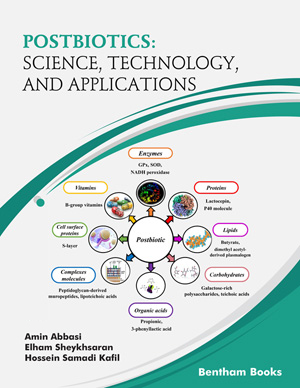Abstract
The process of producing and distributing probiotics in the matrices of a wide variety of foods in the form of living cells has often been associate with difficulties. Several investigations have been doing to develop or optimize various approaches to maintain the viability of probiotic microbes. On the other hand, in recent years (mainly since 2010), a great deal of attention has been paid to using non-viable forms (postbiotics) bacteria as substitutes for probiotics. The term “postbiotic” refers to modified inactivated microbial cells, cell fractions, or cell metabolites that are naturally or synthetically generated by live probiotic cells and exert biological health-promoting effects to the host when administered in sufficient amounts. This chapter provides an overview of key concepts and main constituents of postbiotics, with emphasis on their biological activities.
Keywords: Ethyl phenyl sulfate, Flavonoids, Gut commensal bacteria, Indole, Long-chain fatty acids, Probiotic, Postbiotic, Prebiotics, Polyamines, Retinoic acid, Short-chain fatty acids, Trimethylamine-n-oxide.






















